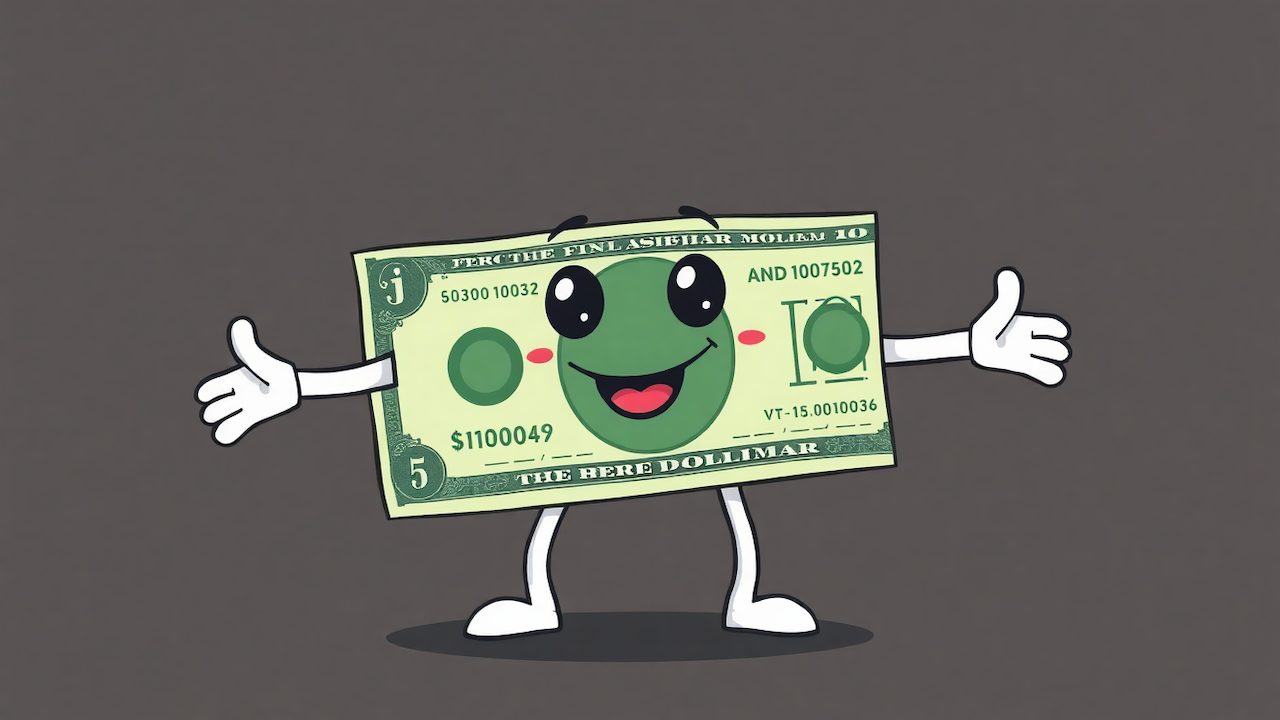(Mike Maharrey, Money Metals News Service) Dollars are the DEI hire of money.
Dollars identify as money, but, well…
Why do people get so upset about mandated DEI (Diversity, Equity, and Inclusion) policies, anyway?
Because they know that when a policy mandates a specific number of a certain kind of people in a position, you will inevitably end up with unqualified or underqualified people doing jobs that are way over their heads because they were put in the position based on criteria other than competence at said job.
That’s why I called dollars the DEI of money. It is unqualified for the job, but it is there because the government said so. It has a monopoly on money, and it locks out better-qualified candidates like gold and silver.
A Weird Question
People sometimes ask me, “Mike, why are you so into gold?”
Quite frankly, I think it’s kind of a weird question.
You would never ask somebody, “Why are you so into dollars?” The answer is self-evident. Dollars are money. And of course, pretty much everybody is “into” money.
Well, gold and silver are money. So, when people ask me why I want gold, in my head, I hear them asking, “Dude, why do you want money?”
Well, duh.
But why gold and silver in particular?
Well, they are real money. They aren’t some DEI hire trying to be money like fiat dollars are.
Gold and silver are sound money. They hold their value over time, unlike government fiat currency, which is constantly being devalued by the governments that issue it.
Paper Pretending to Be Money
Dollars aren’t real money at all. As J.P. Morgan once said, “Gold is money. Everything else is credit.”
Thomas Paine was equally blunt.
“Money is Money, and Paper is Paper. – All the invention of man cannot make them otherwise.”
And Thomas Jefferson drilled down to the crux of the matter.
“Paper is poverty, that it is only the ghost of money, and not money itself.”
You might call paper dollars trans money. It’s one thing attempting to be another. But you really can’t call a dollar “money” when you’ve surgically cut its connection with gold or silver.
The Problem With Fiat Currency
Investopedia defines fiat money as a government-issued currency not backed by a physical commodity such as gold or silver.
So, what is fiat backed by?
“The full faith and credit” of the issuing government.
In other words – nothing.
Fiat money is just paper (or digits in a computer). It only has value because the government says so, and the majority of people accept it at its word. It doesn’t hurt that governments have the power to maintain a monopoly over their currency through legal tender laws, keeping competing currencies at bay.
So, what’s the problem?
It can be created out of thin air.
Governments can run off as much fiat money as they want. We often refer to this as “money printing,” although today, it’s not even that hard. There is no printing press required. A government or central bank can create new money with a few keyboard strokes.
As economist Thorsten Polleit put it, fiat money economies are built on lies.
“Fiat currencies are produced by central banks and commercial banks’ credit expansion. In fact, central banks in cahoots with commercial banks increase the outstanding money supply by extending loans to firms, private households, and government entities. It amounts to money creation from thin air or—in a way—counterfeiting money.”
We go to prison for counterfeiting. The government does it as a matter of policy.
But when you really think about it, there is no fundamental difference between me printing off a bunch of bills and calling it “money” and the government doing it. If I could get enough people to believe my paper had value, it could be money, too.
Sound money such as gold and silver, or currencies backed by a commodity, are limited by the supply of that commodity. You can’t print gold or silver. That means if a country issues a gold-backed currency, the only way it can create more is to acquire more gold. This limits the issuance of new money, minimizing inflation and keeping the value of money relatively constrained and constant.
This is a great scenario for the citizenry, but not so great for governments. Expanding the money supply enables government to borrow and spend more than it otherwise could. Spending money is political power.
You can see the problem, right?
The reason FDR began cutting gold’s ties to the dollar was so he could borrow and spend more. It was a boon for the federal government, helping it grow into the behemoth it is today.
But it hasn’t been so great for you or me.
The greenback has lost more than 85 percent of its value since President Richard Nixon severed the dollar from the last vestiges of the gold standard. The purchasing power of a 1971 dollar is equal to about 13 cents today.
Meanwhile, the dollar value of gold has gone from $35 an ounce to around $2,800 an ounce today. In percentage terms, that’s a 7,900 percent increase.
Fiat money also introduces counterparty risk. In simple terms, it is the possibility that the party on the other side of a transaction might not fulfill its obligation.
Who is the counterpart behind fiat money?
The government.
If you trust the government to maintain a sound, stable currency, I guess there’s no problem. But if you don’t?
Get sound money.
After all, you don’t want your portfolio dominated by DEI hires, now do you?
Mike Maharrey is a journalist and market analyst for MoneyMetals.com with over a decade of experience in precious metals. He holds a BS in accounting from the University of Kentucky and a BA in journalism from the University of South Florida.

